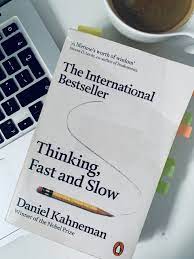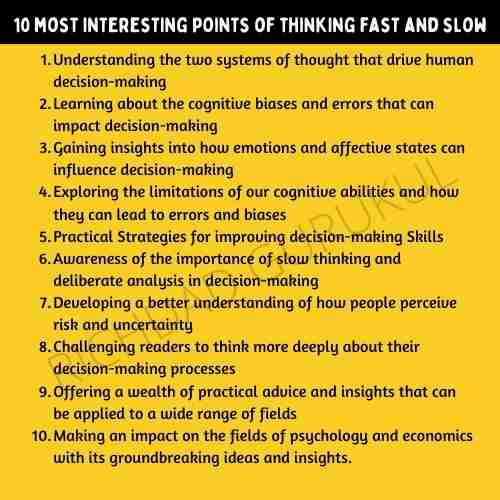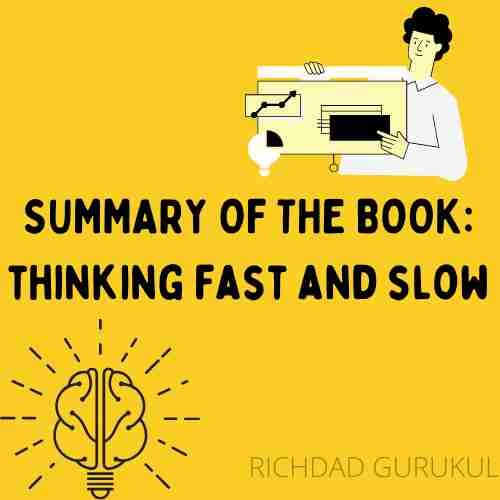Summary Of Thinking Fast And Slow

“Thinking, Fast and Slow” by Daniel Kahneman is a must-read book that explores the two systems of human thought and how cognitive biases and errors can impact decision-making. This thought-provoking book offers practical advice and strategies for improving decision-making skills, making it an influential and highly regarded work in the fields of psychology and economics.
“Thinking, Fast and Slow” by Daniel Kahneman is a groundbreaking book that explores the two systems of thought that drive human decision-making: System 1 and System 2. System 1 is the intuitive, automatic, and fast-thinking system that helps us make quick judgments and decisions based on instinct and past experiences. System 2, on the other hand, is the deliberate, analytical, and slow-thinking system that we use when we need to solve complex problems or make deliberate choices.
Kahneman argues that although both systems are essential for human cognition, they are often subject to cognitive biases and errors that can lead to irrational or suboptimal decision-making. These biases include the availability heuristic, which is the tendency to overestimate the likelihood of events that are more easily remembered, and the confirmation bias, which is the tendency to seek out information that confirms our existing beliefs while ignoring evidence to the contrary.
The book is divided into five sections, each of which explores a different aspect of human cognition and decision-making. In the first section, Kahneman introduces the concept of System 1 and System 2 and explores the ways in which they work together to shape our perception of the world.
In the second section, Kahneman discusses the role of heuristics, or mental shortcuts, in decision-making. He explains how heuristics can be helpful in making quick decisions, but can also lead to biases and errors when used improperly.
The third section of the book explores the ways in which emotions and affective states can influence our decision-making. Kahneman explains how our emotional state can affect our perception of risk and uncertainty, and how this can lead to irrational choices.
In the fourth section, Kahneman discusses the limitations of our cognitive abilities and the ways in which these limitations can lead to errors and biases in decision-making. He explores the concept of overconfidence, or the tendency to overestimate our own abilities and knowledge, and how this can lead to poor decision-making.
Finally, in the fifth section of the book, Kahneman offers insights and strategies for improving our decision-making skills. He suggests that by becoming more aware of our cognitive biases and limitations, and by using techniques such as slow thinking, we can make more rational and informed choices.

“Thinking, Fast and Slow” is a thought-provoking and insightful book that challenges readers to think more deeply about the way they make decisions. It offers a wealth of practical advice and strategies for improving decision-making skills, and is a must-read for anyone interested in psychology, economics, or decision-making in general. The book’s ideas and insights have had a significant impact on a wide range of fields, and its influence is likely to be felt for years to come.

